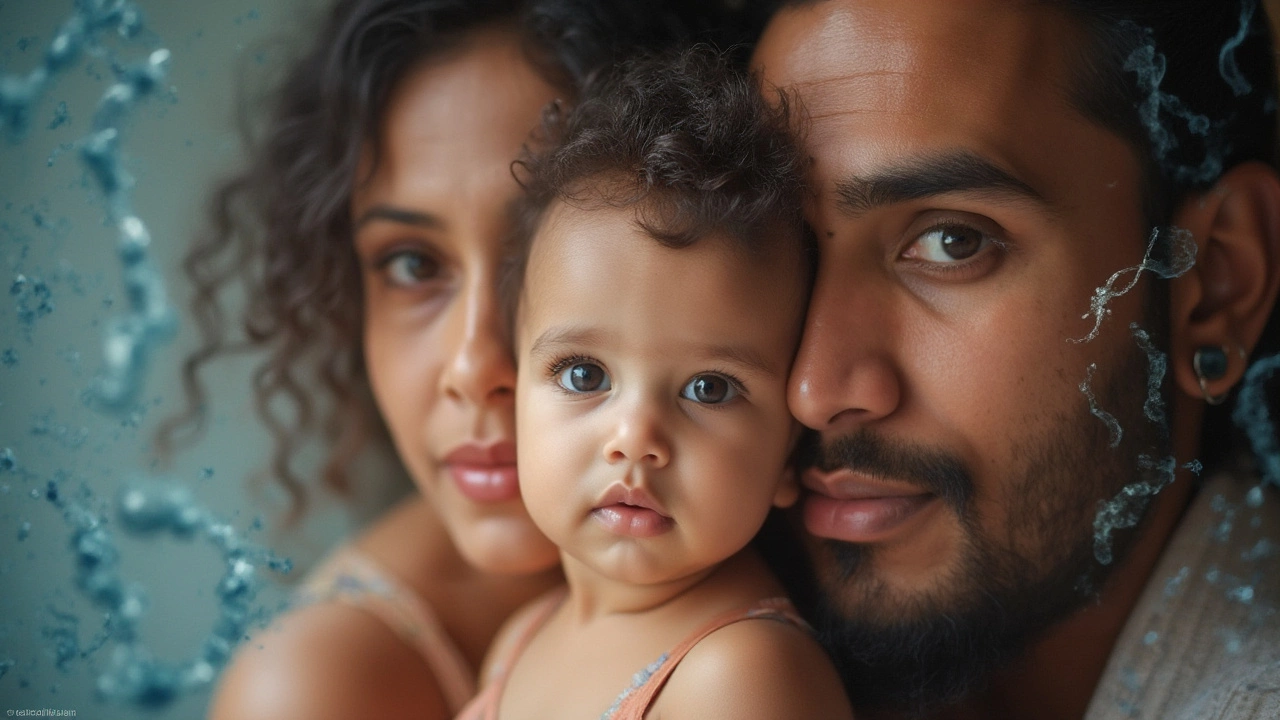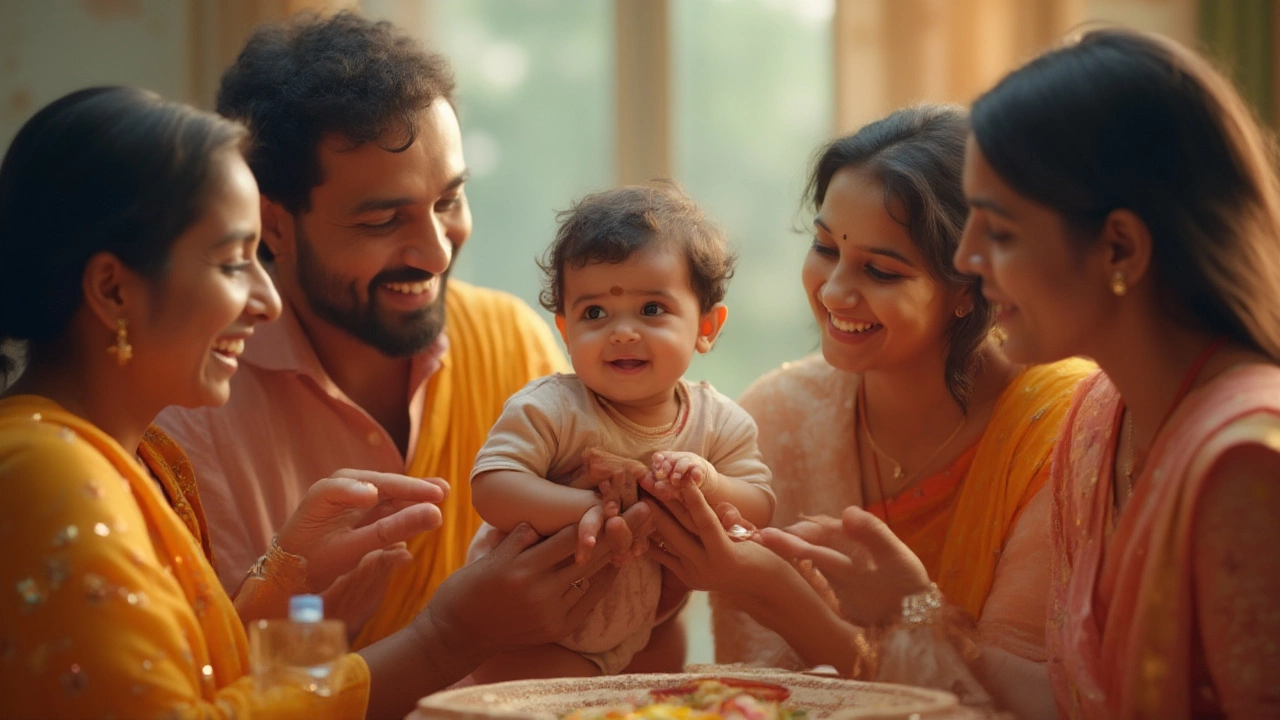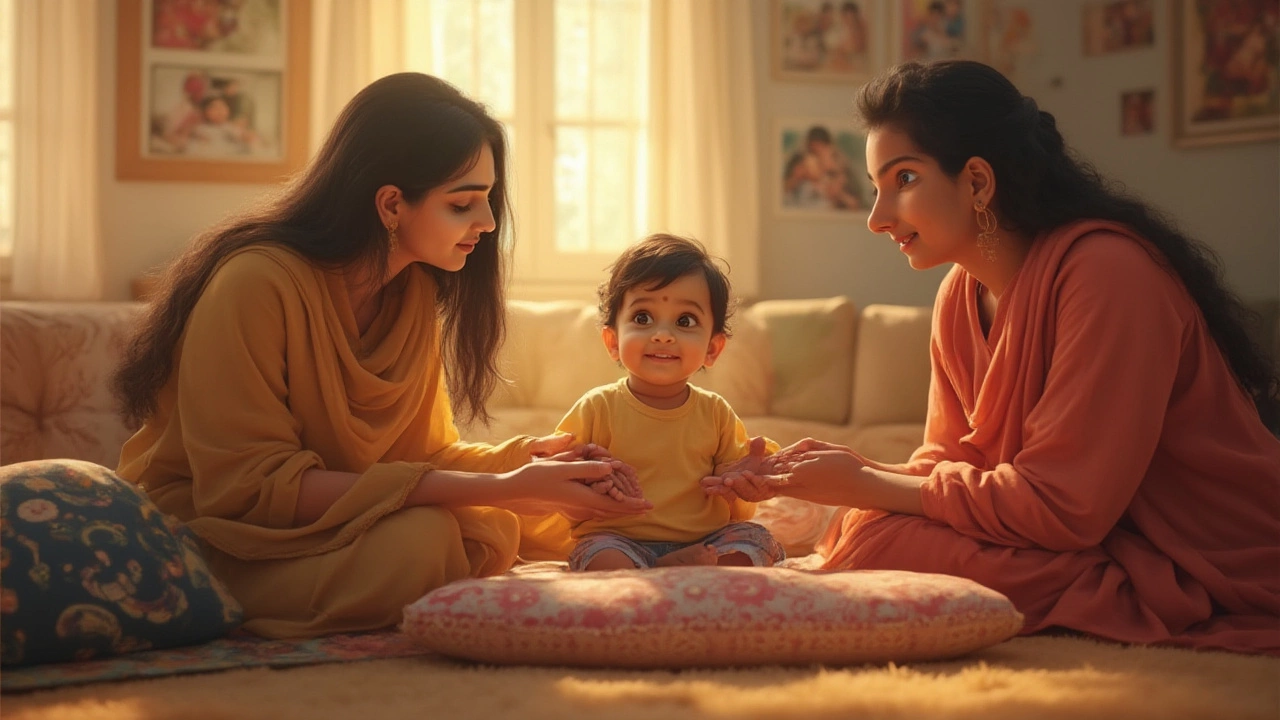You’d expect science to give us a simple answer, but DNA loves to keep things interesting—especially when it comes to IVF babies and who they look like. Picture this: after years of hoping and rounds of in vitro fertilization, a baby arrives, and everyone huddles in, hunting for hints—mom’s nose, dad’s chin, grandma’s wild curls perhaps? It almost turns into a guessing game at family parties. The real twist is, the science behind which parent’s features show up is as tangled as a bowl of spaghetti. And when IVF is in the picture, the myths double, making people think that test tube babies might somehow look different from those conceived the 'old-fashioned' way. Seems wild? Not to geneticists.
How Genetics Work in IVF Babies
Let’s get right into the DNA of the question. Whether a baby is born with a petri dish assist or after an old-school date night, half of their genes typically come from mom, half from dad. With IVF, unless things like donor eggs or sperm are involved, the science is just as straightforward—mom’s egg and dad’s sperm, fused in the lab, are placed back in mom’s uterus. No swapping out the essential blueprints. The only difference is where the magic happens: lab versus nature. So, does this mean IVF babies look more like one parent? Not really. The process doesn’t alter genes or change which traits get passed on.
This is where the chaos of genetics kicks in. Each parent brings a mix of visible and hidden genes—think of them as little switches that can be turned on or off. The color of the eyes, the shape of the nose, even the dimple in Uncle Raj’s cheek—they’re all determined by which version of these gene switches your baby gets. There’s no algorithm that says IVF will favor mom’s look over dad’s. If anything, IVF clinics in Sydney, London, Mumbai, or New York follow strict procedures to preserve the DNA exactly as it is. One Australian study from 2022 summed it up neatly: IVF doesn’t change the likelihood of a child looking like either parent.
Some myths suggest the lab process might mix things up—maybe the environment changes the outcome? In reality, laboratory conditions are tailored to mimic what happens inside the womb, right down to the nutrients that eggs and embryos get. While genetics have their share of surprises (like when both parents have brown eyes, but the baby’s turn out blue), IVF isn’t throwing extra curveballs. The only scenario that might tweak resemblance is when donor eggs or sperm enter the story—in this case, the baby takes after the donor, not the parent who provided the missing ingredient. But with traditional IVF using both parents’ gametes, the biological odds are the same as ever.
That said, some folks wonder about environmental factors in a lab—could being outside the body for a few days influence DNA expression? Interesting question, but studies—like the ones worked on at Australia’s renowned IVF clinics—haven’t found any clear link between the IVF environment and how a baby’s features play out. The gene expression stays the same as it does in natural conception.

Why IVF Babies Sometimes Seem to Look Different
This brings up a question that floats around more than people admit—why do some say IVF babies “look” different? Frankly, a lot of this comes down to perception, not biology. When parents have battled for years to have a child, every feature feels loaded with meaning. Families might spend ages poring over which tiny finger resembles whose. Sometimes, people—especially relatives—might go hunting for any reason to spot a difference, chalking up quirks to the IVF process.
Another factor: when donor eggs or sperm are involved, the story really does change. Children conceived this way will inherit genes from the donor rather than one of their parents. This can set up real differences. For example, if an Australian couple chooses a foreign donor due to local shortages (quite common here in Sydney), physical traits could reflect the donor’s genetic heritage. But if both egg and sperm are from the intended parents, there’s no mysterious switch that suddenly makes a child more like mom or dad based on IVF alone.
Fun fact: a study from Monash IVF in Melbourne found people’s perceptions were heavily influenced by expectations and the emotional rollercoaster of the IVF journey itself. When parents get pregnant after years of treatment, they’re likely to analyze every feature, spurred on by stories (and sometimes, a few too many comments from friends or in-laws).
There’s also something interesting in how human memory and family stories work. Sometimes, similarities are “seen” because people want to believe in a connection. That’s probably why people swear newborns look exactly like their granddad—until the baby’s features change a few months later. Babies’ faces morph as they grow, whether IVF or not, so what you see at birth can look totally different by toddlerhood.
One thing scientists have clocked is something called “genetic imprinting”—certain genes from either the mom or dad can be switched on or off, which can sometimes subtly influence which parent’s traits dominate. But again, the method conception doesn’t tip those scales for or against IVF kids. Whether fertilization happens at home or in a sterile lab, the DNA lottery keeps rolling as usual.
Sometimes, there’s talk about possible health issues from IVF, but extensive research shows no pattern of physical differences in appearance compared to naturally conceived babies. Australia’s national health statistics back this up, showing rates of birth weight, height, and general features matching up across the board. The only difference: IVF parents might spot things sooner, simply because they’re watching so closely.
In families using donor gametes, parents sometimes worry or hope their child will end up sharing their facial characteristics. Helpful tip: embrace genetic counseling. Aussie clinics and many worldwide encourage would-be parents to have open conversations about expectations and how family resemblance can play out. It calms nerves and stops a lot of the midnight Googling.

Practical Tips for Embracing Family Resemblance
If you’re expecting—or parenting—an IVF baby, the urge to look for family features is as natural as breathing. Here’s the real talk: genes are a wild shuffle. Whether your baby comes from IVF, natural conception, or uses a donor, the best you can do is wait and see which traits appear. So, how can parents make peace with the uncertainty?
- Don’t overanalyze baby photos in the early days. Newborns change so fast that features can shift in weeks. Give it time.
- If you used donor eggs or sperm and worry about connections, focus on nurture, not nature. Studies from the University of Sydney repeatedly show that kids bond through shared experiences at least as much as through looks. Stories, family rituals, and even that one weird eyebrow lift all count in building belonging.
- Celebrate differences as much as similarities. Sometimes a baby’s unique features spark joy, showing off the quirky blend only your family can produce.
- If you find comparisons stressful, chat with your clinic’s counselor—they see families go through this all the time and can help with practical reassurance.
- Skip measuring ears for ‘proof’ of parentage. If you want a more scientific answer (or just satisfy curiosity), modern DNA paternity and ancestry tests are safe and widely available, often clearing up doubts in days.
Another solid tip: remember that health, happiness, and personality are just as important as face shape. Sometimes, parents notice mannerisms or habits that aren’t genetic at all, but pop up just from being around each other. There’s something undeniably powerful about the nature plus nurture combo.
People sometimes ask if IVF opens doors to genetic engineering or "designer babies." While the technology to select certain traits (like disease resistance) is evolving, clinics operate under strict Australian law. Choosing for looks? That’s strictly off-limits. What you’re getting with IVF in 2025 is still mostly a roll of the dice—one that sticks closely to nature, just moved to a different setting for those crucial first days.
And here’s an interesting fact to wrap your head around: identical twins conceived via IVF are just as identical—physically and genetically—as those conceived naturally. The moment genes get together and start dividing, the dance is the same whether you set the scene with a candlelit dinner or a scientist’s steady hand.
So, if anyone asks you if IVF babies look more like mom or dad, you’ve got the honest answer now. It's all in the genes, and IVF doesn't change the game. Your baby could turn out to be the spitting image of your partner, your great-aunt, or no one in particular. That’s genetics—and a little bit of the universe—at work for you.
